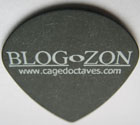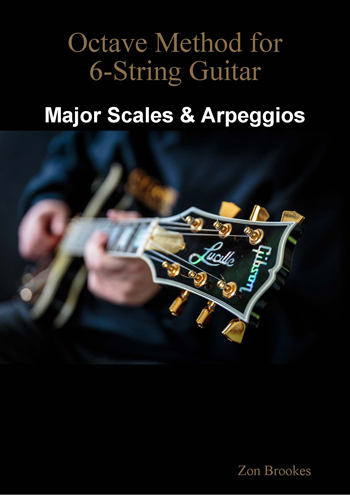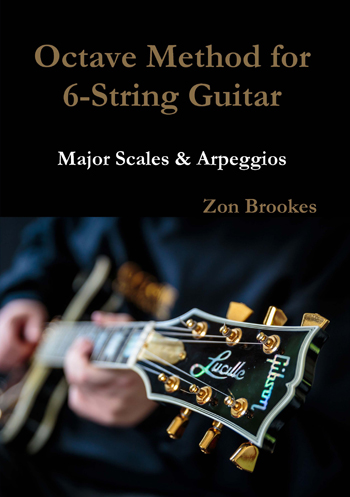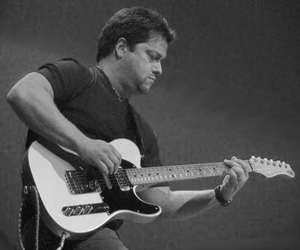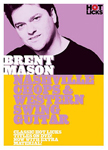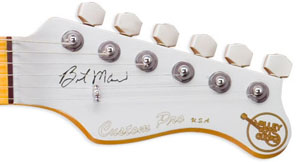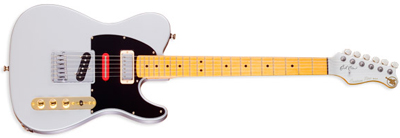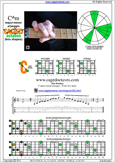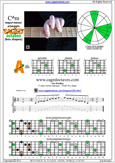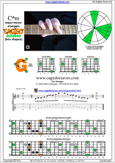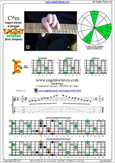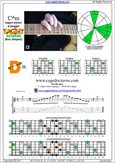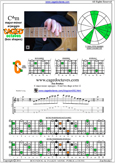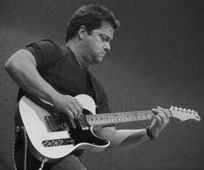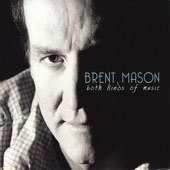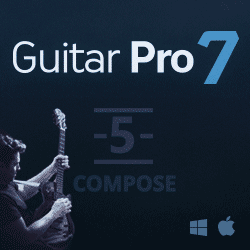Octave Method for 6-String Guitar : Major Scales & Arpeggios
eBook :Octave Method for Six String Guitar Fretboard navigation method for 6-string guitar based on an instrument specific modification of the CAGED guitar method, using linked octave shapes rather than open position chord shapes for ease and simplicity of use. |
Paperbook Book :Octave Method for 6-String Guitar Fretboard navigation method for 6-string guitar based on an instrument specific modification of the CAGED guitar method, using octave shapes rather than open position chord shapes for ease and simplicity of use. |
Brent Mason
|
|
Brent Mason is the Nashville session musician from |
Brent Mason - Part 1 of 5
Brent Mason - Part 2 of 5
Brent Mason - Part 3 of 5
Brent Mason - Part 4 of 5
Brent Mason - Part 5 of 5
Brent Mason - First Rule of Thumb
|
|
C major-minor arpeggio box shapes

In BLOGoZON No.91 the box shapes for the C major blues scale were demonstrated but as with all scales there is an underlying triad (3 note chord) which defines that scales overall tonality. Usually this is either a major or minor chord (depending on the type of third present in the particular scale being analysed), however blues scales are special in this regard as they have an underlying 4-note chord. In the case of the C major blues scale the underlying 4-note chord is the major-minor which is the summation of both a major (1, 3, 5) and a minor (1, ♭3, 5) triad (with the 1 and the 5 being common to both chords).
The easiest example of the MAJOR-MINOR ARPEGGIO is rooted on C natural, hence the CAGED octaves sequence is shown for C natural in the diagram that follows:-


The diagram that follows shows all of the C major-minor arpeggio notes plotted over the 6-string guitar's fretboard in the CAGED octaves styles:-

A more long term solution to fretboard navigation is to see scales/modes/arpeggios as INTERVAL shapes rather than note names - as these are universal to all scales, modes, arpeggios and chords rather than specific to one particular root note - with this in mind the intervals for the C major-minor arpeggio are detailed below in the CAGED octaves manner:-

The table and tabbed panel below details all five box shapes for the C major-minor arpeggio for the 6-string guitar in the CAGED octaves style.
CAGED octaves C major-minor arpeggio box shapes
|
|||||
|
|||||
- 5Cm2
- 5Am3
- 6Gm3mG1
- 6Em4Em1
- 4Dm2
- 5Cm2 at 12
- 5Cm2
- 5Am3
- 6Gm3Gm1
- 6Em4Em1
- 4Dm2
- 5Cm2 at 12
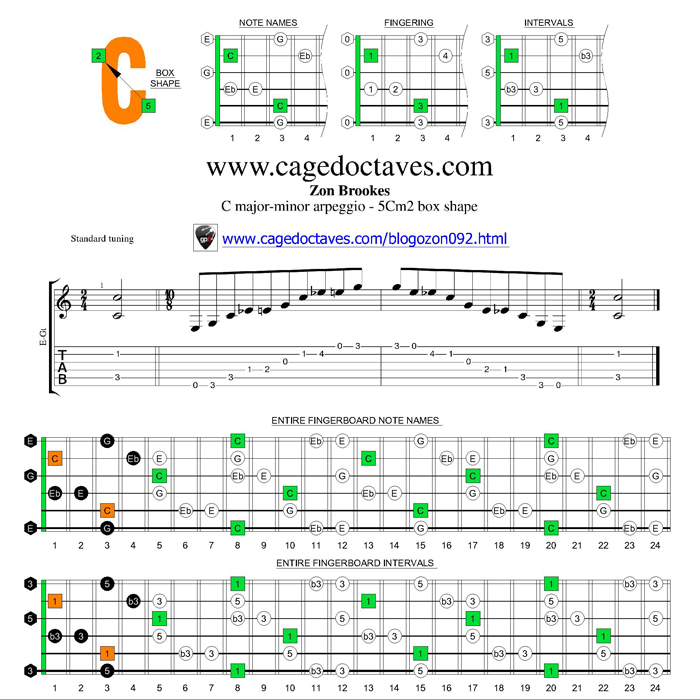
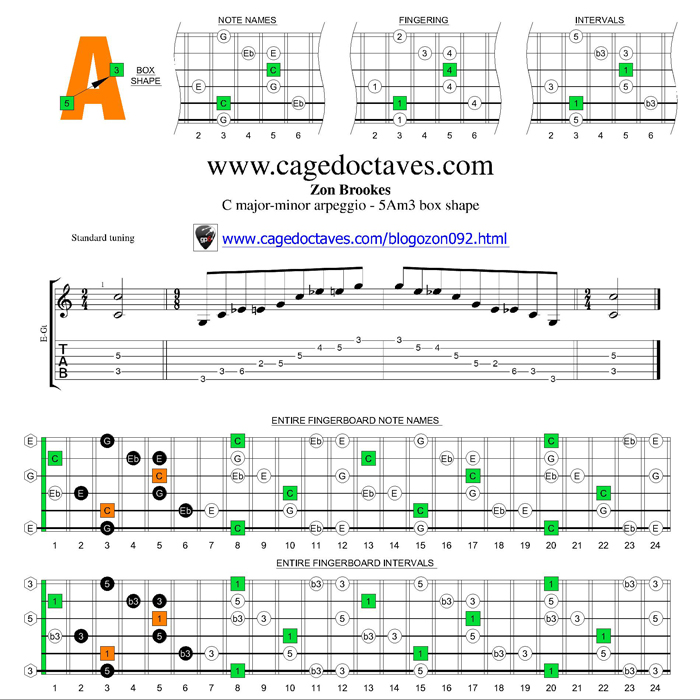
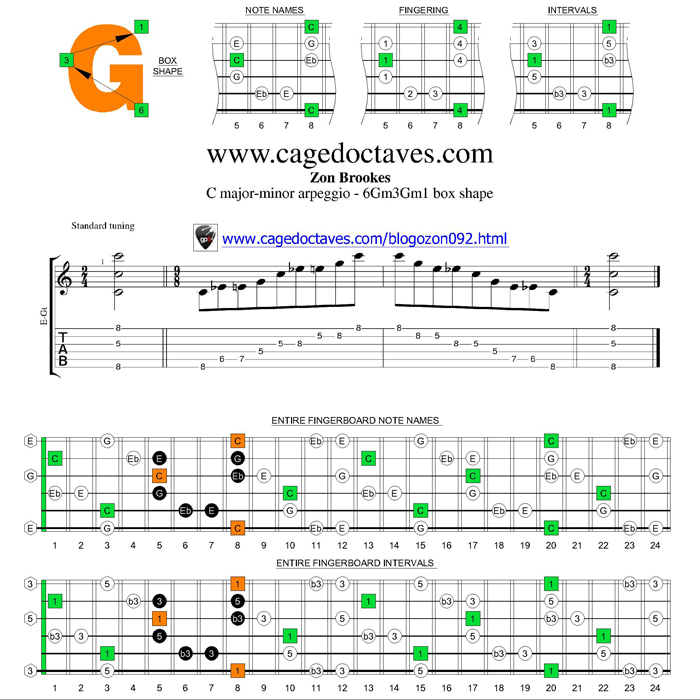
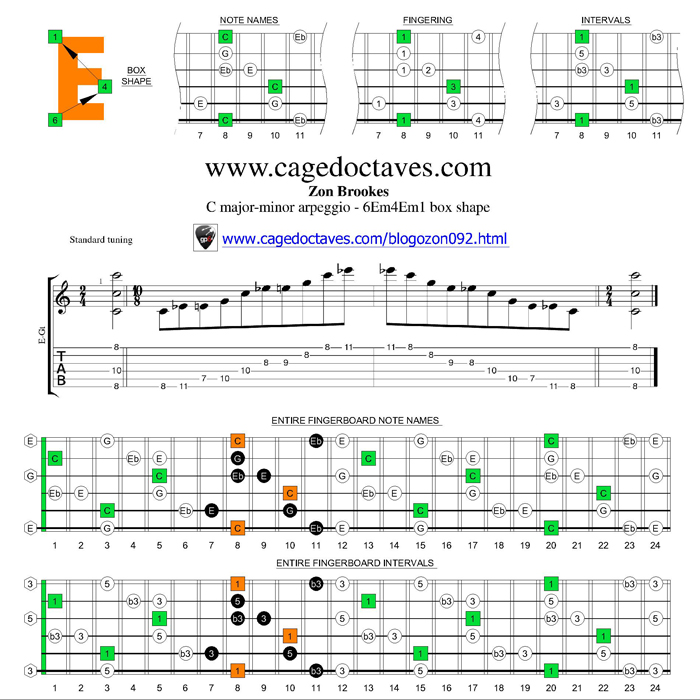
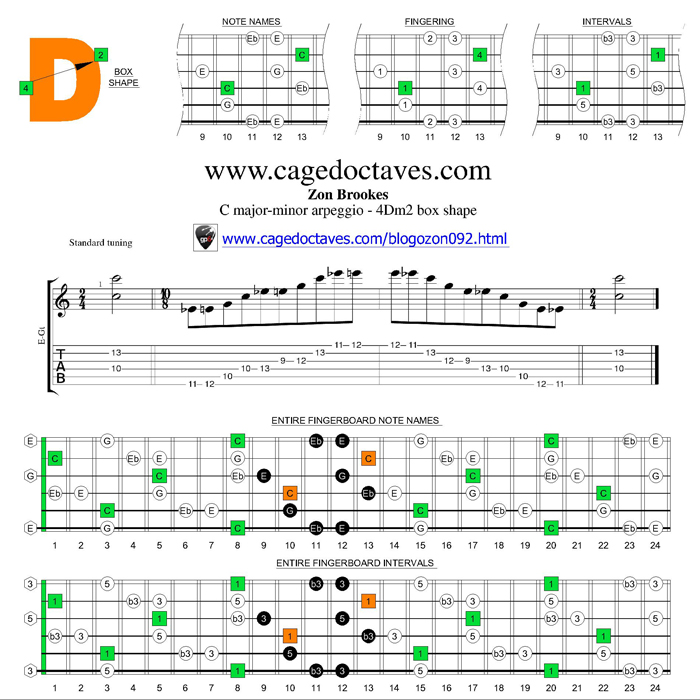
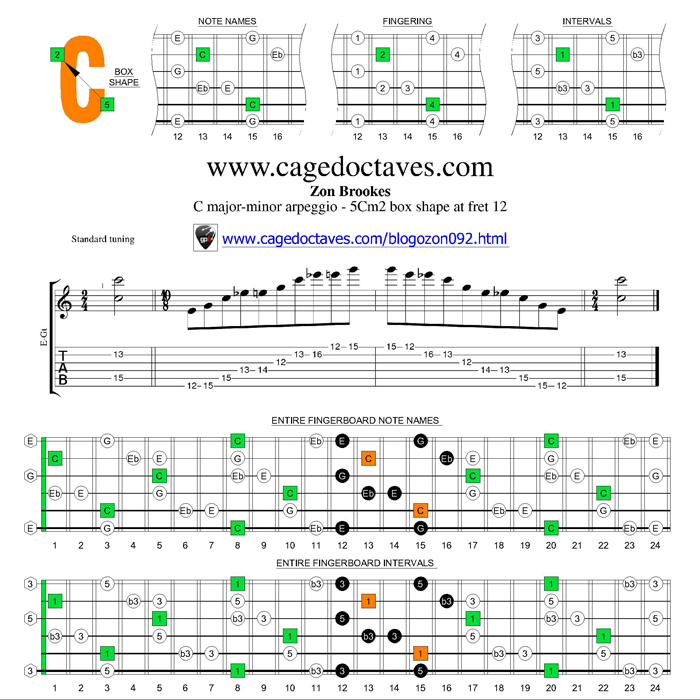
|
Smokin' Section....Zon Brookes |
